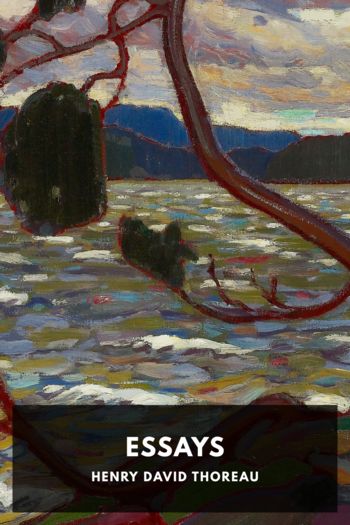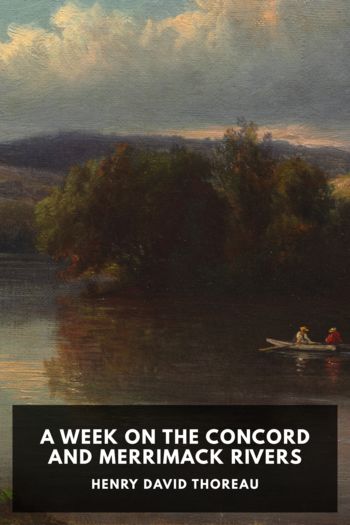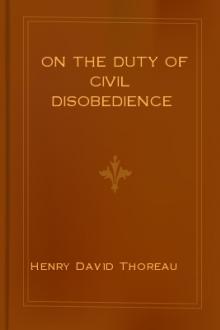Essays by Henry David Thoreau (feel good books .txt) 📕

Description
Though perhaps most famous for Walden, Henry David Thoreau was also a prolific essayist. Many of his essays touch on subjects similar to his famous book: long walks through nature, things found in moonlight that are invisible and unheard during the day, his preference for wild apples over domestic ones. In many ways he prefigured environmentalism, expressing his love for untouched nature and lamenting what the encroachment of man and cities were doing to it.
He also had strong opinions on many other subjects. One of his most famous essays, “On the Duty of Civil Disobedience,” was written as a result of his going to jail for refusing to pay several years’ worth of poll taxes. One of the primary reasons for his refusal was his holding the government in contempt for its support of slavery, and several of his other essays express support and admiration for John Brown, who thought to start a slave revolt when he attacked Harper’s Ferry in 1859.
Whether discussing trees in a forest, slavery, or the works of Thomas Carlyle, Thoreau’s essays are deeply personal and full of keen observations, often in poetic language. They give a sense of the man expressing them as being much more than the views being expressed.
Read free book «Essays by Henry David Thoreau (feel good books .txt) 📕» - read online or download for free at americanlibrarybooks.com
- Author: Henry David Thoreau
Read book online «Essays by Henry David Thoreau (feel good books .txt) 📕». Author - Henry David Thoreau
Thus much the English planters have discovered by patient experiment, and, for aught I know, they have taken out a patent for it; but they appear not to have discovered that it was discovered before, and that they are merely adopting the method of Nature, which she long ago made patent to all. She is all the while planting the oaks amid the pines without our knowledge, and at last, instead of government officers, we send a party of wood-choppers to cut down the pines, and so rescue an oak forest, at which we wonder as if it had dropped from the skies.
As I walk amid hickories, even in August, I hear the sound of green pignuts falling from time to time, cut off by the chickaree over my head. In the fall, I notice on the ground, either within or in the neighborhood of oak woods, on all sides of the town, stout oak twigs three or four inches long, bearing half-a-dozen empty acorn-cups, which twigs have been gnawed off by squirrels, on both sides of the nuts, in order to make them more portable. The jays scream and the red squirrels scold while you are clubbing and shaking the chestnut trees, for they are there on the same errand, and two of a trade never agree. I frequently see a red or gray squirrel cast down a green chestnut bur, as I am going through the woods, and I used to think, sometimes, that they were cast at me. In fact, they are so busy about it, in the midst of the chestnut season, that you cannot stand long in the woods without hearing one fall. A sportsman told me that he had, the day before—that was in the middle of October—seen a green chestnut bur dropt on our great river meadow, fifty rods from the nearest wood, and much further from the nearest chestnut-tree, and he could not tell how it came there. Occasionally, when chestnutting in midwinter, I find thirty or forty nuts in a pile, left in its gallery, just under the leaves, by the common wood-mouse.
But especially, in the winter, the extent to which this transportation and planting of nuts is carried on is made apparent by the snow. In almost every wood, you will see where the red or gray squirrels have pawed down through the snow in a hundred places, sometimes two feet deep, and almost always directly to a nut or a pine-cone, as directly as if they had started from it and bored upward—which you and I could not have done. It would be difficult for us to find one before the snow falls. Commonly, no doubt, they had deposited them there in the fall. You wonder if they remember the localities, or discover them by the scent. The red squirrel commonly has its winter abode in the earth under a thicket of evergreens, frequently under a small clump of evergreens in the midst of a deciduous wood. If there are any nut-trees, which still retain their nuts, standing at a distance without the wood, their paths often lead directly to and from them. We, therefore, need not suppose an oak standing here and there in the wood in order to seed it, but if a few stand within twenty or thirty rods of it, it is sufficient.
I think that I may venture to say that every white-pine cone that falls to the earth naturally in this town, before opening and losing its seeds, and almost every pitch-pine one that falls at all, is cut off by a squirrel, and they begin to pluck them long before they are ripe, so that when the crop of white-pine cones is a small one, as it commonly is, they cut off thus almost every one of these before it fairly ripens. I think, moreover, that their design, if I may so speak, in cutting them off green, is, partly, to prevent their opening and losing their seeds, for these are the ones for which they dig through the snow, and the only white-pine cones which contain anything then. I have counted in one heap, within a diameter of four feet, the cores of 239 pitch-pine cones which had been cut off and stripped by the red squirrel the previous winter.
The nuts thus left on the surface, or buried just beneath it, are placed in the most favorable circumstances for germinating. I have sometimes wondered how those which merely fell on the surface of the earth got planted; but, by the end of December, I find the chestnut of the same year partially mixed with the mould, as it were, under the decaying and mouldy leaves, where there is all the moisture and manure they want, for the nuts fall first. In a plentiful year, a large proportion of the nuts are thus covered loosely an inch deep, and are, of course, somewhat concealed from squirrels. One winter, when the crop had been abundant, I got, with the aid of a rake, many quarts of these nuts as late as the tenth of January, and though some bought at the store the same day were more than half of them mouldy, I did not find a single mouldy one among these which I picked from under the wet and mouldy leaves, where they had been snowed on once or twice. Nature knows how to pack them best. They were still plump and tender. Apparently, they do not heat there, though wet. In the spring they were all sprouting.
Loudon says that “when the nut [of the common walnut of Europe] is to be preserved through the winter for the purpose of planting in the following spring, it should be laid in a rot-heap, as soon as gathered, with the husk on, and the heap should be turned over frequently in the course of the winter.”
Here, again, he is stealing Nature’s “thunder.” How can a poor mortal do otherwise? for





Comments (0)